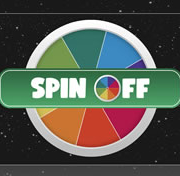The life cycle of a bee quiz
Bees are vital for the ecosystem, being excellent pollinators that help many plants develop the fruit and seeds they need to reproduce.
The queen bee is responsible for laying eggs. At any point, it can lay clutches of hundreds of eggs in a single sitting. This ensures that the colony always has a fresh supply of new workers to help in various tasks.
A bee egg is incredibly tiny, although you can see it with the naked eye. In some species, you can even see a rice-shaped bee grub swimming inside the egg.
As the grub grows into a larva, it remains blind and legless. Young nurse bees tend to hundreds of larva, feeding them a variety of nutritious substances – from royal jelly to a mixture of honey and pollen. The larva will grow swiftly over the span of one week, before pupating inside a cocoon to transform into an adult specimen.
Depending on the type of bee, the development of a pupa into an adult can last from two to three weeks. As an adult, the bee can take any number of roles, such as workers. Unfertilized eggs hatch into males called drones, which help in fertilizing queen bees.
With our original "the life cycle of a bee quiz," you can gain a deeper understanding into the lifespan and development of various bee species.










